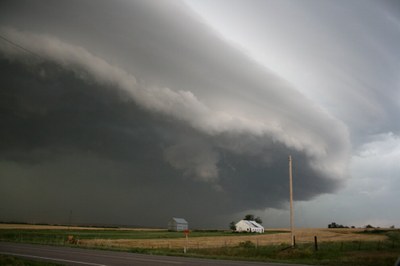Horizontal winds become major movers of CO2 during cold fronts

What happens to atmospheric carbon dioxide when low-pressure systems move in has largely remained a mystery, but Penn State-led research is offering new insights that may help improve global carbon models. IMAGE: SEAN WAUGH, NOAA/NSSL
![]()
UNIVERSITY PARK, Pa. Trees, crops and other vegetation in the midwestern United States act as large carbon sinks during summer, taking in carbon dioxide (CO2) and limiting the amount of the greenhouse gas that enters the atmosphere. What happens to carbon dioxide when a cold front moves in has largely remained a mystery, but Penn State-led research is offering new insights that may help improve global carbon models.
“The focus of this research is to understand and quantify how low-pressure systems transport carbon dioxide in the atmosphere,” said Ken Davis, professor of atmospheric and climate science at Penn State. “This is part of a bigger effort, the Atmospheric Carbon and Transport-America (ACT-America) project, to learn how to interpret measurements of carbon dioxide in the atmosphere to properly infer sources and sinks of carbon dioxide at the earth surface. To do this, we need to know how carbon dioxide is mixed by the atmosphere, and there has not been much past focus on how low-pressure systems slosh around this greenhouse gas.”
Read the full story: Horizontal winds become major movers of CO2 during cold fronts
